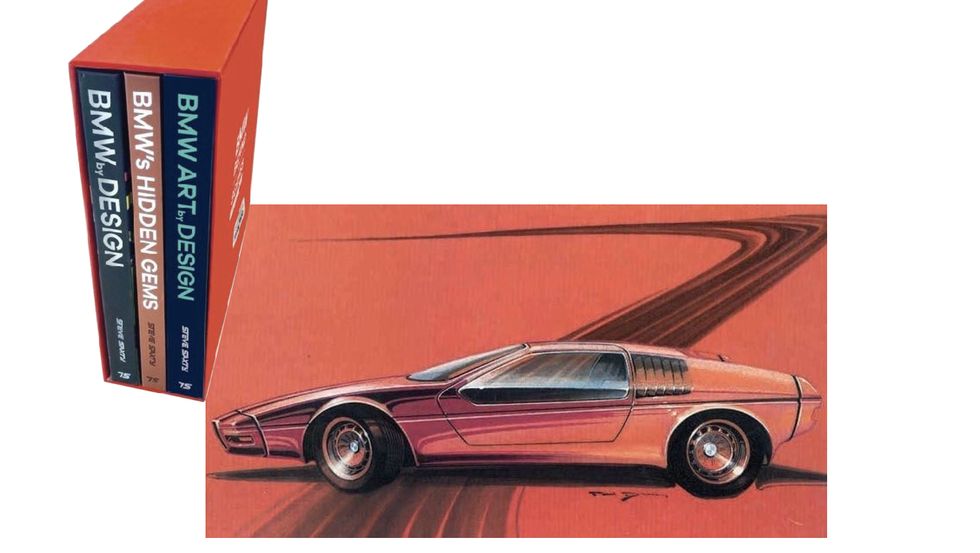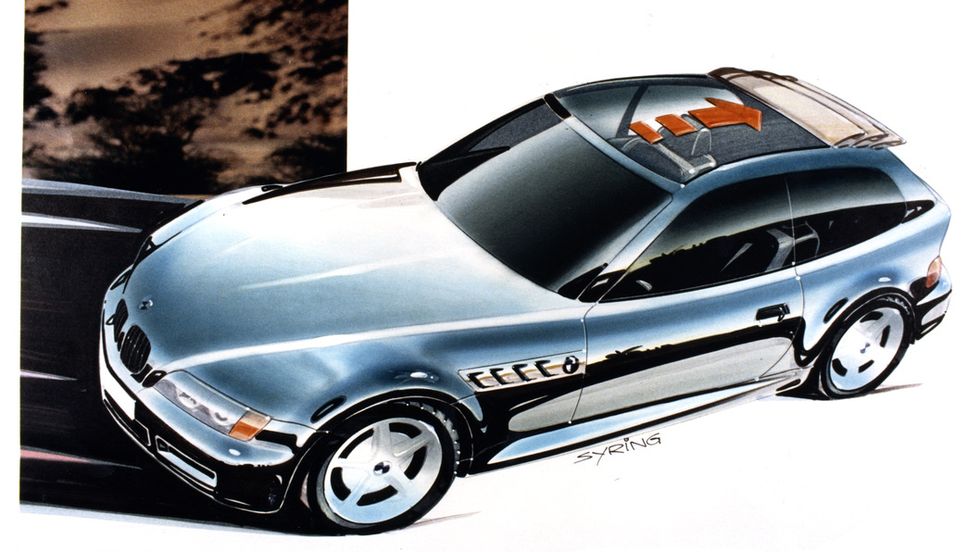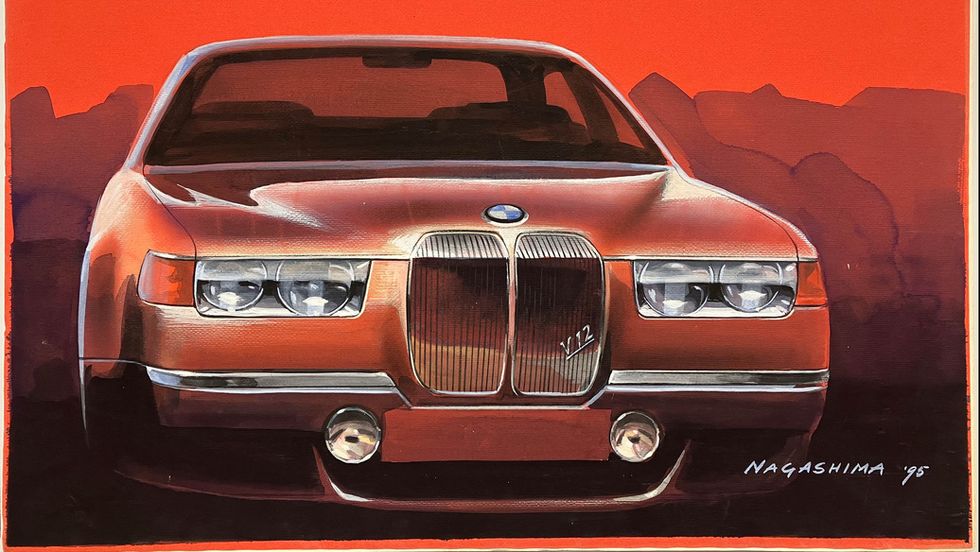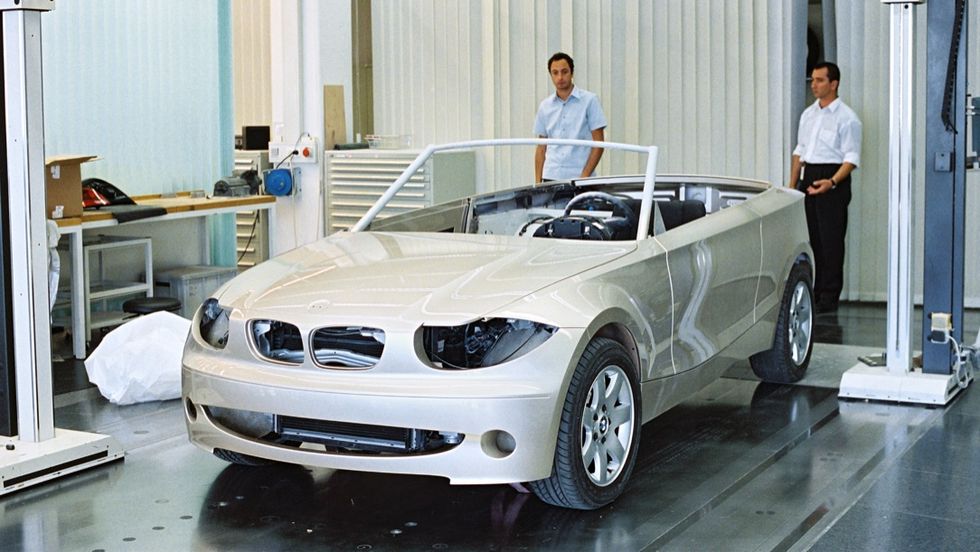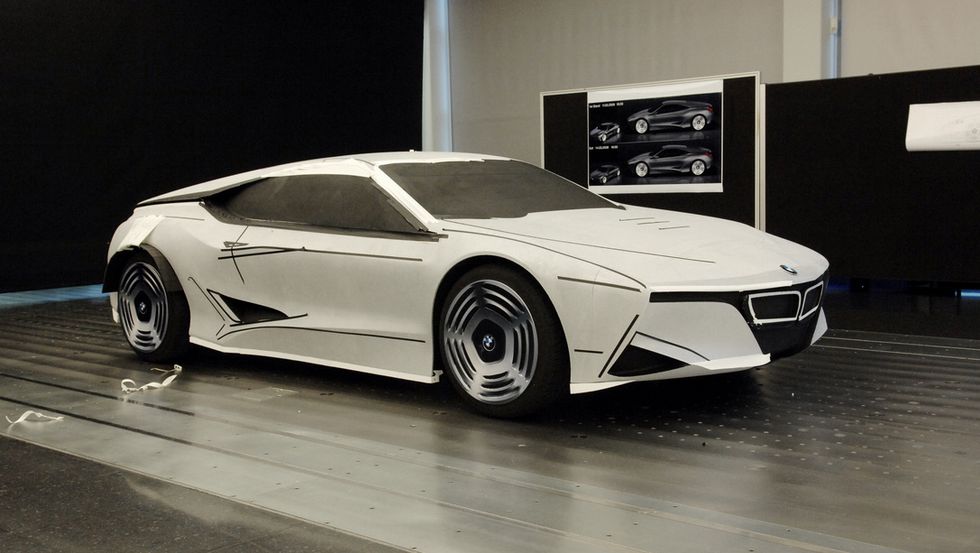The fastidiously researched and exquisitely illustrated new three-book set BMW: Behind the Scenes had a strange genesis. As author Steve Saxty explains: “One morning, I received a phone call from Harm Lagaay, the former head of design at Porsche. He said, I’ve got a great idea.” Both Lagaay and Saxty had worked for Ford and Porsche together, so Saxty thought the call might relate to one of those brands. Instead, Lagaay said, “You should do a book on BMW.”
Lagaay had recently had lunch with Adrian van Hooydonk, the BMW design chief. Van Hooydonk had bought Saxty’s previous book, Secret Fords, and wanted to meet with Saxty about a similar project he was hatching for BMW. The result was truly unfettered entreé to BMWs design archives and design team.
“The thing that surprises me is just how willing and excited everybody was to welcome an outsider in,” Saxty says. “One of the things that Adrian and I agreed to early on was, if we were going to do this, it should be the whole inside story. So I truly got access to anybody I wanted. There was no PR oversight.”
The resultant trio of books truly exemplifies this freedom. Nearly every page brings a fresh wonder: a sketch that presages a known or unknown concept; an idea that had only been hinted at by BMW gatekeepers; insight on how something compelling evolved. Nowhere is this truer than in the second volume, BMW’s Hidden Gems: Unseen Cars and Untold Stories, which features dozens of concept cars, design sketches, and ideating noodling that will surprise and delight even the most knowledgeable Bimmerphile.
To give you a taste of what you might find, we had Saxty walk us through some images from the book, providing detail on what we’re seeing and why it’s relevant. Take a peek inside with us, with the author as our guide.
Code Orange
“BMW didn’t know why orange was a chosen color for their product. But I got it from the man himself, Paul Bracq,” Saxty says, referring to BMW’s famed design chief in the 1970s. “He’d told me that he’d once had a studio overlooking the French Air Force’s training jets. He adored the Day-Glo orange paint on their wingtips and asked for some spare cans. He later used it on the E25 1972 show car [inspiration for the M1], and an iconic color was born.”
The Z3 M Coupe
“The Z3 M coupe is seen as a design classic today, but it nearly didn’t turn out that way,” Saxty says. “The Z3 convertible was created exclusively as a four-cylinder Miata fighter, but Burkard Göschel, the engineering chief, wanted an M3-powered six-cylinder car. The result was a lovable Frankenstein designed by Markus Syring. But what isn’t known is that his original sketch incorporated the traditional Hofmeister kink at the base of the rear window, as you see in this image. Production cars had to make do without it, though, because they used the Z3 convertible’s rear fender.”
Ultra-Luxury Proposal
BMW frequently looked for ways to elevate its product offerings above the flagship 7-series. This sketch reflects one of these attempts from the 1990s, before the E65 7-series was being developed. Joji Nagshima, an esteemed designer, “constructed this as what they call a lighthouse project,” according to Saxty. “A super-premium 7-series. At that point, [BMW’s purchase of] Rolls-Royce wasn’t on the horizon, but they had a V-12 engine. Had BMW not bought Rolls-Royce, and had they started thinking more and more seriously about the 7-series, that’s where this could have come in.”
2K2 Re-Creates the 2002 for the ’90s
“The whole idea of the 2K2 was pretty cool. It was a stripped-back car, almost like a My First BMW, to give a younger driver a taste of the brand magic. It was for a 26-year-old who can’t afford a 3-series,” Saxty says. Power options and other weight-adding features were taken out, a composite body was designed, and the total weight goal was under 1000 kg (2200 pounds), which was very light. “But the marketing people said, ‘We don’t need a low-cost coupe for young, wealthy Americans. What we need is a metal-bodied hatchback for Europeans.’ And so the project morphed into the original 1-series.”
Return of the M1
The 2008 M1 Homage was quickly rushed together to celebrate the 30-year anniversary of the original M1. This isn’t that, exactly. “This is the lightest BMW in the world,” Saxty says. “You can pick it up in one hand. It’s made of Styrofoam. They only had four months to put the show car on the stand, so, as a consequence, this is the model. Those bits of tape lying on the floor are from when Chris Bangle was mocking up a wider rear fender on it. It’s almost like a sketch, a muse. Milled out of foam and then mocked up.” BMW considered making a production version of this car with the F1-derived V-10 engine from the era’s M5. “Think of where it could have gone . . . ” Saxty says, trailing off.
The full three-volume set can be preordered direct from Saxty and will be out in February ($299.95). The first volume ($99.95) is available now.
Brett Berk (he/him) is a former preschool teacher and early childhood center director who spent a decade as a youth and family researcher and now covers the topics of kids and the auto industry for publications including CNN, the New York Times, Popular Mechanics and more. He has published a parenting book, The Gay Uncle’s Guide to Parenting, and since 2008 has driven and reviewed thousands of cars for Car and Driver and Road & Track, where he is contributing editor. He has also written for Architectural Digest, Billboard, ELLE Decor, Esquire, GQ, Travel + Leisure and Vanity Fair.

